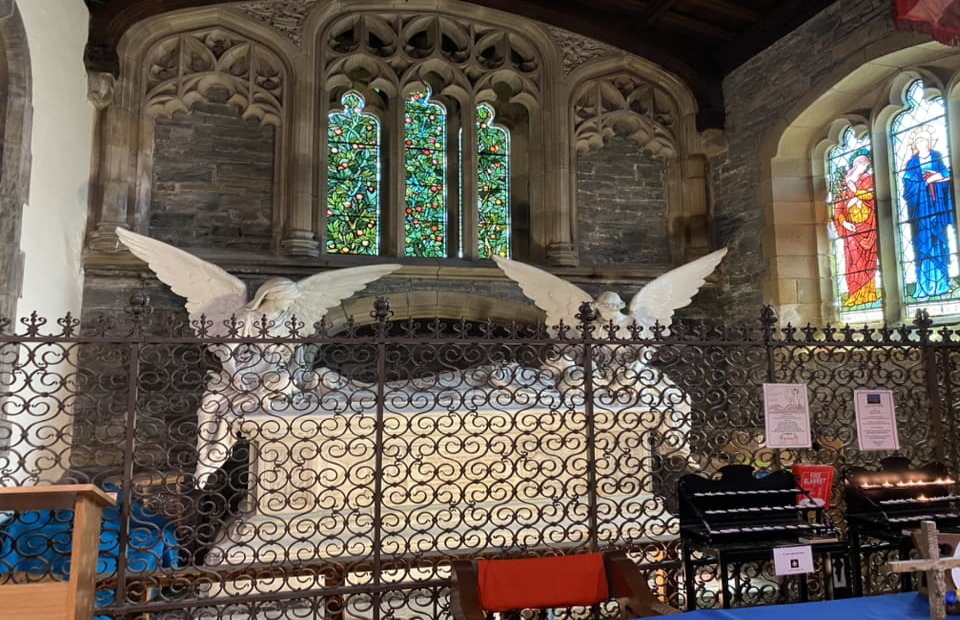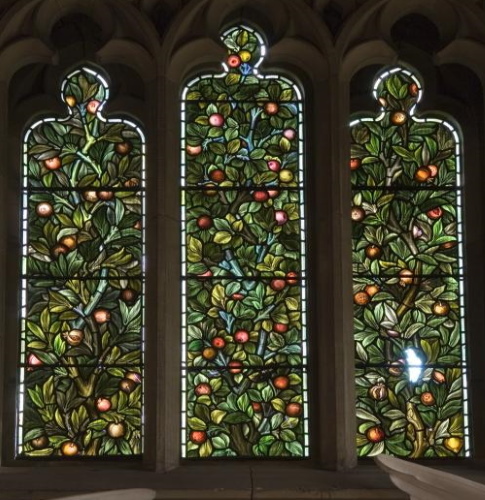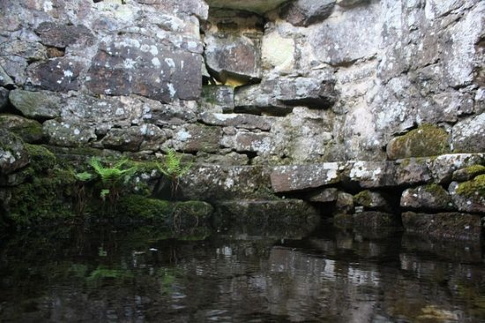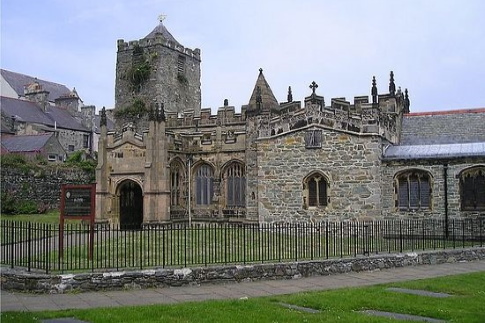8th November - St Cybi / St Cuby
Written by Anne Newman 17th September 2019 updated 2023
Life Story
Saint Cybi (also called Cuby and Kabius) was a 6th-century Cornish bishop, saint and king who worked largely in North Wales.
According to the 'Life of Saint Cybi', this saint was the son of Salomon , a 'warrior prince', generally thought to have been a King of Cornwall. In the 'Bonedd y Saint', his father's name is given the Welsh form, Selyf. His mother Gwen was sister to Saint Non and he was a cousin of St. David of Wales
He was raised as a Christian and, in early life, went on a pilgrimage to Rome and Jerusalem. He became a priest and was consecrated as a bishop, before he arrived home to find that his father was dead and he was King of Cornwall. Cybi politely declined the throne.
With ten disciples he crossed to Gaul, travelling and founding churches.
Eventually he returned across the Channel, landing in Cornwall. Some may have thought he wanted to reclaim his father's territory but he went on to found more churches. (see below).
Cybi died age 84 on 8th November 554 and was buried in Eglwys y Bedd (the Chapel of the Grave) adjoining his monastery at Holyhead.

| Tree of Life Window St. Cybi Church, Holyhead. |  |
Churches
The first was at Tregony. He lived in a cell next to a well. There is a Cuby's Well there to this day. This is the modern church on the site, in the Parish of St. Cuby the Abbott. From here he would have undertaken missions to the surrounding countryside preaching to the people and building churches at Duloe, Cubert and Landulph.
He then moved on to south Wales, founding churches at Llangbi between Usk and Caerleon in Monmouthshire. He did not get on with King Edelig so left and spent three days with his cousin David at Mynyw, (Menevia)-St. David's.
With his disciples he set sail for Ireland and joined St. Enda at Cill Éine on the bleak island of Arran, Galway Bay. Cybi's oratory may well have been at Teaghlach Éinne. They stayed on Inis Mór for four years, living alongside the Irish monks and building his small oratory.
Four of his disciples are named. They are Llibio; Peulan, the brother of Gwenfaen the Rhoscolyn saint; Maelog of Llanfaelog and Cyngar, Cybi's uncle. All have churches on Anglesey. St Cyngar's church is at Llangefni.
Cyngar was older and had lost his teeth. A milking cow was kept to provide him with food and this caused a major dispute between Cybi's group and the Irish monks. First of all Maelor dug the ground too close to the entrance of a leading Irish monk's cell. Crubthir Fintan became angry and then furious when the cow raided his vegetables. He called on God to blot Cybi out of the island. Cybi decided to leave, cursing Fintan,
'May God destroy him out of this island!'
Time in Ireland
Cybi's group crossed to the mainland and settled briefly at Mochop, near Artaine in Meath. He impressed the monks by fasting for forty days and nights. He was accepted but Fintan heard about this and pursued them, driving them out. Cybi made two more attempts to settle in Kildare but again Fintan harassed them. Cybi prayed,
'May all thy churches be deserted and may never be found three churches singing at thy altar in all Ireland!'
Later, in 1405, Henry IV's army returned to Dublin after invading Anglesey and they took with them St. Cybi's shrine and relics. These were installed in Christ Church cathedral in Dublin, but disappeared at the time of the Reformation.
Settling in Anglesey
After his time in Ireland he sailed back to
north Wales, settling at Llangbi on the Llyn peninsula. One story
is that Maelgwn, King of Gwynedd granted him all the land that a goat
could encircle in one day. Maelgwn's hounds pursued it and it
returned to Cybi. So Maelgwn Gwynedd gave him the old Roman
fort at Holyhead off Anglesey (known, in Welsh, as Caer Cybi, "Cybi's
Fort") on Holy Island (thence called Ynys Gybi, "Cybi's
Island").
He founded a large monastery there where St Cybi’s Church is now located. The monastery was important and it was said Cybi was consulted about doctrine, including the differences between the Celtic and Roman Churches- this before the Synod of Whitby which was held after Cybi's death.
St Cybi's Well, Llangybi, Gwynedd, north Wales, and Church in Holyhead
 |  |
Treatment appears to have consisted of giving patients an equal quantity of well-water and sea water, morning and evening, for a period varying from seven to ten days. They then had to bathe in the water once or twice a day, retiring after each bath to a bedchamber in the adjoining cottage where they were given a quantity of healing water to drink. The success or otherwise of the treatment was judged by whether the patient became warm in bed or remained cold, with the former condition indicating that the treatment was progressing satisfactorily. Full description of Cybi's Well
Other connections
Cybi was a great friend of Saint Seiriol whose oratories were at Penmon and on Puffin Island, the opposite corner of Anglesey. They would often meet and on his journey in the morning Cybi would face the sun, as he would returning in the evening. Seiriol had his back to the sun both ways. They were known as 'Seiriol Wyn a Chybi Felyn.' (White Seiriol and Tawny Cybi).
Rhyd-y-Saint Railway station (Saints' Ford) on the Red Wharf Bay
branch line near Pentr was named so as Cybi and Seiriol are said to
have met there.
![]()
An Icon at the Russian Orthodox Church at Blaenau Ffestiniog shows both these saints at the wells of Clorach in the centre of Anglesey.
When St. Cybi died he
left the legacy of the Celtic Clás, which controlled most of the
West of Anglesey until the Reformation. The church was sacked by the
Vikings in the 10th century and suffered further violation when Henry
IV's army invaded Anglesey from Ireland in 1405, most of Wales being
under the control of Owain Glyndwr at the time.
The last assault on the church took place in the 17th century when soldiers of Cromwell were garrisoned in the church for several years. They systematically destroyed the interior windows, font, tombs and statues. The empty niches in the porch stand in testament to their actions. Thankfully, the carvings above the door survived.
Thanks to Friends of St. Cybi website for much of this information and Louise for photos.
---oOo---
Anne is sharing a series of events throughout the year - you can find them listed by clicking to the link Feast Days & Festivals





